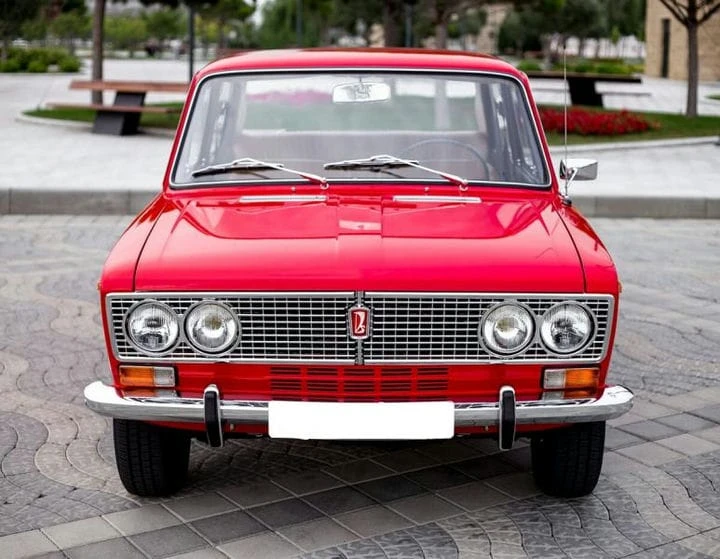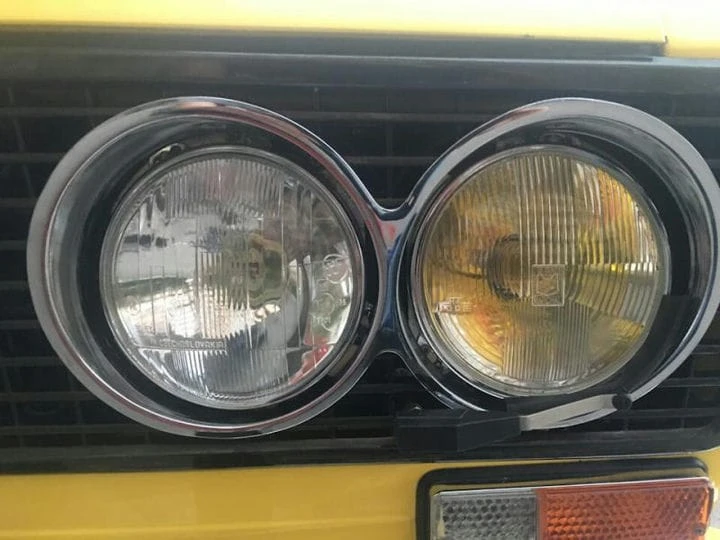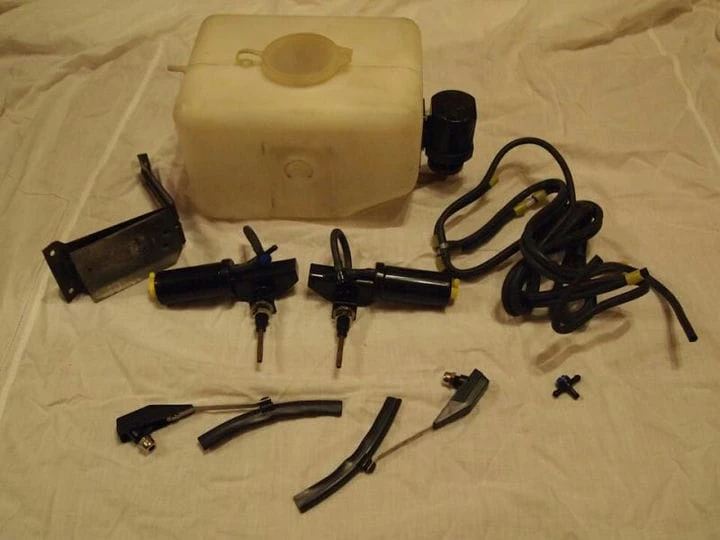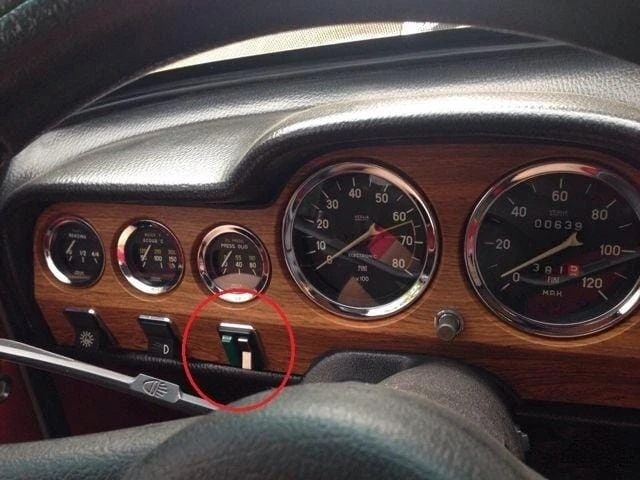VAZ-2103, features of early releases, 1972-1975
On December 5, 1972, in honor of the celebration of the next anniversary of the Constitution Day, the first official VAZ-2103 car rolled off the VAZ assembly line! Undoubtedly, it was cunning, VAZ had been mass-producing transitional models with the VAZ-2103V index for a year, from the end of 1971 to the end of 1972, it was actually a VAZ-2101 in the back of 2103, and produced quite a few, 1250 copies. The letter “B” meant a temporary option, the VAZ-2103V did not go on sale, the price of the model was not determined, therefore it was sold to VAZ employees, subcontractors, builders of Tolyatti and VAZ, at the price of VAZ-2101, i.e. 5500 rubles, which was undoubtedly a “gift” for those who were able to purchase it. I happened to see several VAZ-2103V live, my mother in those years worked at the TsNIIEP housing, which designed several experimental monolithic houses for Tolyatti, apartments in which VAZ managers and leading employees subsequently received, therefore, quite a few VAZ-2103Vs were allocated to the head designers from Moscow, I managed to get to know some of the specimens better, I lived in the TsNIIEP housing cooperative house, and some of the owners of the VAZ-2103V were my neighbors. VAZ-2103V was not a model with a single configuration, it changed during the year and was brought up, the very first samples had a power frame of the body 2101 with plumage 2103, there were no ventilation hoods on the rear roof racks, the motor shield was also 2101 designed for the installation of an early pedal node 2101 without VUT, was lower than on later releases of 2101, the front panel of the VAZ-2103V and the early full-fledged VAZ-2103, produced from December 1972 to March 1973, did not have blowouts. By the middle of 1972, rear roof pillars 2103 with exhaust ventilation appeared on the 2103B, complete with the original amplifier, the engine shield began to be installed in 2103, the original pedal assembly and VUT were installed on it, the intake manifold of the 2101 engine was equipped with a fitting for connecting the VUT. All 2103Bs were equipped with interior 2101, door cards, handles were also 2101, the upper inner parts of the doors remained open like in 2101, there were no firmware for fastening the mustaches of loaves, a bracket 2101 was welded to the amplifier of the motor shield for installing the cigarette lighter and the air damper lever, doors the bodies were 2101 with the firmware of the outer panels for the caps for fastening the moldings, who is familiar with the early VAZ-2101, remembers that there were stampings for the end marker lights on the ends of the front doors, which appeared only on full-fledged VAZ-2103, on the VAZ-2103V there were also such stampings, in the front pillar there were holes for installing a limit switch and for installing a rubber adapter, these holes were closed with rubber plugs, there was no reversing light on the VAZ-2103V, there was only stamping on the rear mudguard. In 1973, full-fledged VAZ-2103s began to appear on the streets, they caused a lot of emotions among motorists of those years who managed to get to know the VAZ-2101 well and appreciated it, many already had a VAZ-2101 and dreamed of changing to VAZ-2103. I replaced the VAZ-2101 of 1970 with the VAZ-2103 and my father bought for the yellow-stripe currency certificates of Vneshtorgbank earned in Sudan. these holes were closed with rubber plugs, there was no reversing light on the VAZ-2103V, there was only a stamping on the rear mudguard. In 1973, full-fledged VAZ-2103s began to appear on the streets, they caused a lot of emotions among motorists of those years who managed to get to know the VAZ-2101 well and appreciated it, many already had a VAZ-2101 and dreamed of changing to VAZ-2103. I replaced the VAZ-2101 of 1970 with the VAZ-2103 and my father bought for the yellow-stripe currency certificates of Vneshtorgbank earned in Sudan. these holes were closed with rubber plugs, there was no reversing light on the VAZ-2103V, there was only a stamping on the rear mudguard. In 1973, full-fledged VAZ-2103s began to appear on the streets, they caused a lot of emotions among motorists of those years who managed to get to know the VAZ-2101 well and appreciated it, many already had a VAZ-2101 and dreamed of changing to VAZ-2103. I replaced the VAZ-2101 of 1970 with the VAZ-2103 and my father bought for the yellow-stripe currency certificates of Vneshtorgbank earned in Sudan. many already had a VAZ-2101 and dreamed of changing to a VAZ-2103. I replaced the VAZ-2101 of 1970 with the VAZ-2103 and my father bought for the yellow-stripe currency certificates of Vneshtorgbank earned in Sudan. many already had a VAZ-2101 and dreamed of changing to a VAZ-2103. I replaced the VAZ-2101 of 1970 with the VAZ-2103 and my father bought for the yellow-stripe currency certificates of Vneshtorgbank earned in Sudan.

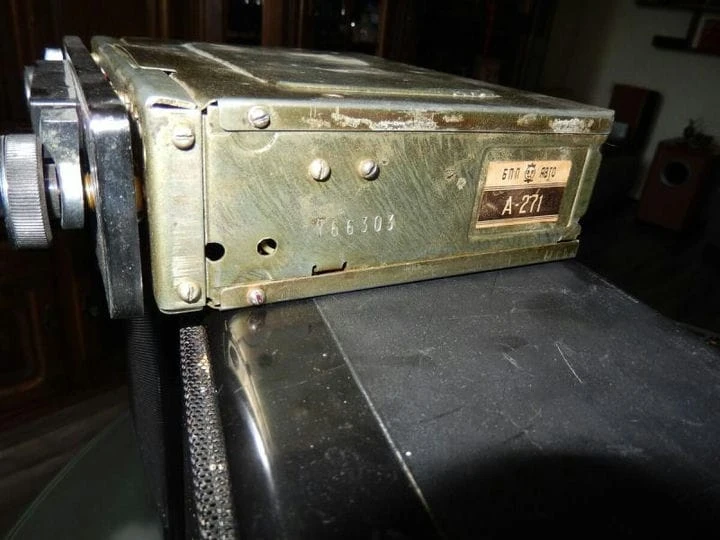
In the early 70s, when purchasing a car for yellow-striped (developing countries) or stripless (capital countries) certificates, the buyer got the opportunity to take a purely export car, the VAZ-2103 was cherry-colored, painted with Yugoslav enamel, with a cherry interior with Yugoslav upholstery, the equipment of this VAZ- 2103 was somewhat different from the standard, to the features of the export VAZ-2103, I will return later, the differences were not very significant, but they were. It makes no sense to describe the external differences between the VAZ-2103 and the VAZ-2101 in detail, they are well known, let me remind you that until 1975 the front panel had five vertical blows with five horizontal slots on each blow.
The side moldings were Yugoslav with rolled ends, without the plugs that were installed on later releases, there were also moldings above the arches of the wings, the threshold moldings were different in profile from the 2101 moldings, the exterior lighting equipment was installed in the early stages by the Italian Carello or Marelli, a reversing light appeared, on the earliest VAZ-2103 one could also meet Italian bumpers, somewhat different from the Soviet ones. On the early VAZ-2103, a mechanical windshield washer was installed, which was a “blue enema” 2101, suspended on the left mudguard under the hood and a pump controlled by the driver's left foot, the pumps could be of two types, domestic 2103-5208010, similar in design to the pump GAZ-24, or imported pumps (Marelli, Bosch, Hella) 21032-5208010, which had contacts, briefly included wipers with water supply, later such pumps began to be produced with catalog number 21011-5208010. The wiper switching modes were controlled by a two-section key, as on 2101, only in a stand-alone housing, and not in a three-key block, a two-horn stalk 2101 with a casing 2101 was installed, the air damper control lever became original, as well as its mounting bracket with a limit switch signal lamp. The salon received bucket-type seats, a central folding armrest appeared on the back sofa, seat upholstery, door cards, floor carpets for early three-rubles were supplied by the Yugoslavs. The accelerator pedal remained floor-mounted 2101, the gearshift linkage was chrome-plated, with the original ball-tip, the handbrake lever also became chrome-plated with the original plastic handle, there was a lot of chrome in the cabin, which then disappeared, chrome-plated guide keys, caps of the original ceiling handles, caps of the door handles of the armrests, for a very short time put chrome-plated seal rings on the devices and ventilation rotary deflectors, on the dashboard. I would like to dwell separately on the torpedo 2103, which has set its teeth on edge for four decades of production, this torpedo was a supernova in design for 1973, and not only for the USSR, it was developed by the Pininfarina SpA design bodywork studio for the Fiat 124 Sport Coupe model 1972. The engines of the early VAZ-2103V, VAZ-21031 (with engines 2101, 1.2 l), VAZ-2103 (1.5) had differences from later ones, they can be distinguished by the number stuffed on the side of the radiator, the absence of a tide near the fuel pump, where on later issues, a number was stuffed, cylinder head 2101-1003011 was placed on them, early engine blocks were lined with ni-resist (high nickel cast iron) inserts in the upper cylinder bores, which are the areas of greatest wear. Block 2103 differed from block 2101, the length of the cylinders increased by 7 mm, the crankshaft of the engine 2103 had a stroke of the connecting rod and piston group increased by 7 mm, the distributor of the engine 2103 had a rod 7 mm longer than the rod of the distributor 2101, pistons on both engines 76mm (2101), connecting rods 2101, both early distributors did not have a VROZ, but had a brass eccentric for manual adjustment of the UOZ, the Weber 2103 carburetor had enlarged jets and chambers, had a shut-off solenoid valve, unlike Weber 2101, the air filters of the early VAZ-2103 had an additional removable crankcase ventilation filter installed in the corps. Early 2101/2103 engines were very well balanced, sleeved blocks made it possible to install nominal pistons selected according to the group several times, honing and boring were not required. Such blocks were produced until the middle of 1975, when the block casting changed, the changed blocks ceased to sleeve, the block number on the changed blocks began to be stuffed on the usual tide, next to the gasoline pump, when assembling engines with modified blocks, the cylinder head 21011-1003011 was installed, unified with engines 21011 (pistons 79mm, 1.3L, actually a 2101 engine with oversized pistons), 21031 (Pistons 79mm, 1.6L, actually a 2103 engine with oversized pistons, marked 2106 in 1976), appeared in 1974. For engines 2103 with an early block, according to the technical documentation of VAZ, a power of 75 hp was indicated, with a modified block of 77 hp, 2101 engines also had nameplate powers of early 62 hp, later 64 hp, but these were “tax” powers, real ones could differ by 10% depending on a specific engine instance. A limited batch of VAZ-21031 cars with 1.6-liter engines, 80 hp, equipped with a reinforced clutch, was assembled in 1975 and was intended for the police, but occasionally came across VAZ-21031 for personal use, in particular VAZ -21031 bullfight color was my neighbor in the garage, with a six front panel with two blows, headrests in the front seats, a clear transition to the VAZ-2106. I have repeatedly heard the motorist's “authoritative” opinion that 2101/2103 engines are better than 21011/2106 engines, in part it is justified, but only for early 2101/2103 engines produced before mid-1975. The rear axle of VAZ-2103 cars received a gearbox with a gear ratio of 4.1 to compensate for the error in the speedometer of wheels of a changed size with tires IYA-170, the rear brake mechanisms received a mechanism for automatically adjusting the gaps between the pads and drums, the gearbox was supplemented with a reverse light switch, the engine cooling system received a Yugoslav-made electric fan, but this option was not present on all early VAZ-2103. The VAZ-21035 car with a 2101 engine was mainly delivered to Western Europe, to countries with high taxes on engine size, and had a complete 2103 package, including wheels, a rear axle with a 4.1 gearbox, an exhaust system with an additional resonator, unlike VAZ-2103V on which they installed the rear axle 2101 with a gearbox 4.3, brake mechanisms with eccentric clearance adjustment, the wheels were also placed on disks 2101 with I-151 tires. What I don’t understand is that wheels on 2103 rims with I-170 tires were forbidden in the 70s to be installed on VAZ-2101/21011 cars, it was impossible to pass a technical inspection with them, but on 2103V they installed and passed maintenance without problems … From the very beginning of the production of full-fledged Most of the VAZ-2103 began to be exported, including to developed capitalist countries, VAZ, having a flexible production technology, was able to assemble export cars in various trim levels.
instead of the standard turn signal relay, a Hella rear fog lamp was installed, its original exhaust switch with indication was located on the same bracket as the alarm switch. Many options from export configurations were mastered by the Soviet industry, heated rear windows, fog lights ZX, alarms, inertial seat belts, etc., and later began to be installed on VAZ cars intended for sale on the domestic market.
Of course, it is impossible to cover everything within the framework of this article, but I hope that the article will be useful to VAZ lovers, restorers who are familiar with the design of the VAZ-2103 car and its subsequent modification VAZ-2106, most of the early VAZ-2103 did not survive to this day, and those which survived, for the most part, experienced many repairs and alterations, and incorporate parts from later releases.

